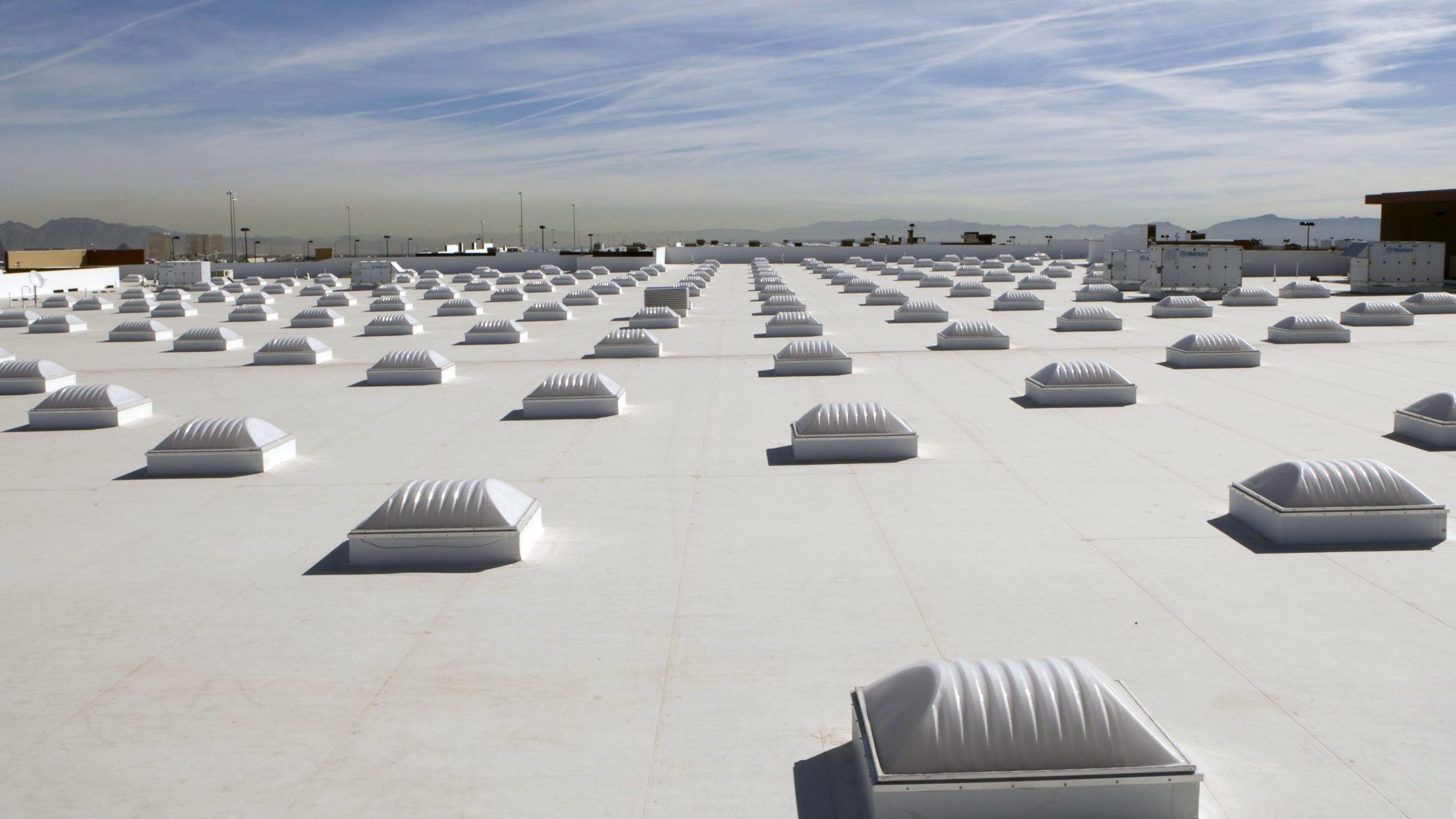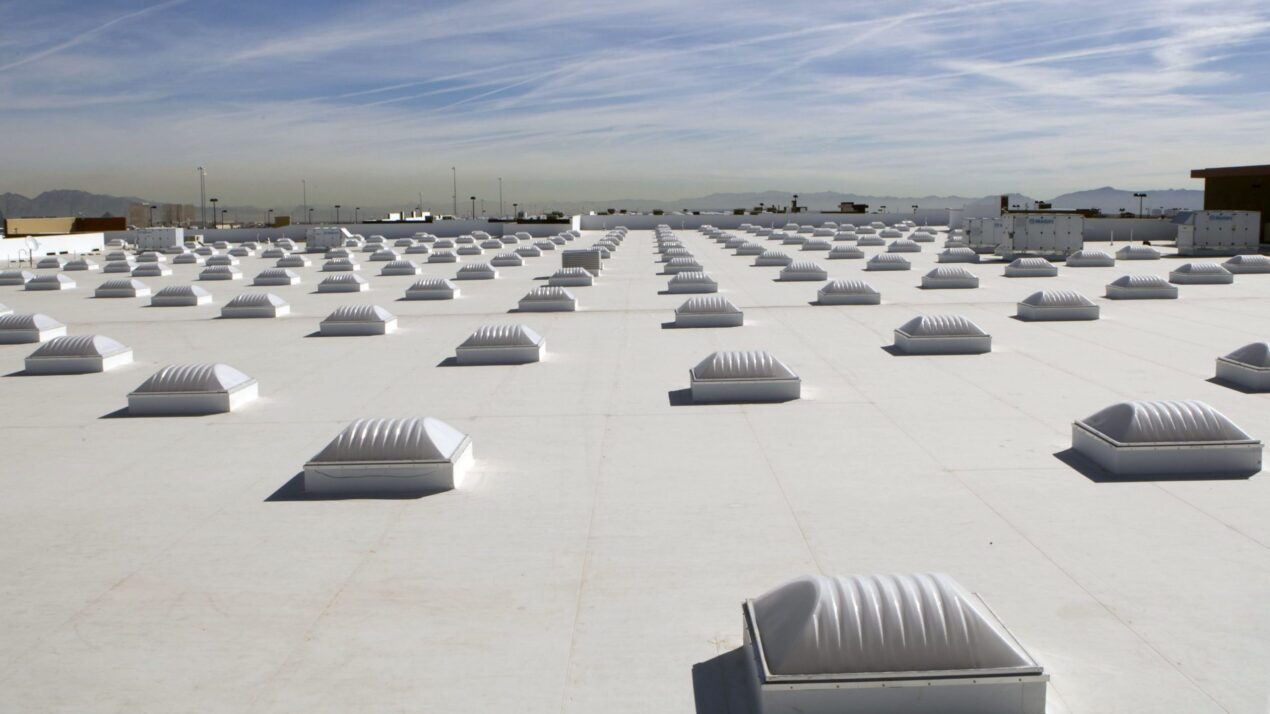
Cool roofs
Commitment

Case Studies
Summary
Cool roofs are designed with materials that reflect more sunlight than conventional roofs, reduce building heat retention, and in turn reduce the urban heat island effect. Cool roofs can reduce internal building temperatures by up to 30%.
Implementation
Set public goals to achieve a certain number or share of cool roofs or square footage within a target timeframe. These goals can be included in a strategic plan.
Considerations for Use
Areas with cold winters will trade-off reduced heat retention during warmer months with increased heating needs and moisture buildup during colder months. Cool roofs work best in areas with uniform building heights. Shorter buildings may cause glare on taller buildings. Depending on the treatment applied, cool roofs lose some surface reflectivity over time. The cost of coating materials will vary based on selected coating and local availability. Integrating cool roofs in new construction is more cost effective than a retrofit, but cool roofs are still one of the most affordable and approachable retrofit measures.
Overview
Climate:
Hot/Dry, Hot/Humid, TemperatePolicy Levers:
CommitmentGovernments set ambitious goals or targets to guide prioritization and investment.Trigger Points:
Preparatory measures (actions to establish authority to act)Actions to establish/ensure the authority to act when appropriate trigger-points occur.Intervention Types:
Buildings and Built FormSectors:
Buildings
Case Studies
Impact
Target Beneficiaries:
Heat-vulnerable communities, ResidentsPhase of Impact:
Risk reduction and mitigationMetrics:
Energy savings by building, Indoor air temperature reductions, Number of buildings compliant with provision, Outdoor ambient air temperature
Implementation
Intervention Scale:
BuildingAuthority and Governance:
City governmentImplementation Timeline:
Short-term (1-2 Years)Implementation Stakeholders:
City governmentFunding Sources:
Public investmentCapacity to Act:
High, Low, MediumBenefits
Cost-Benefit:
LowPublic Good:
LowGHG Reduction:
MediumCo-benefits (Climate/Environmental):
Reduce greenhouse gas emissionsCo-benefits (Social/Economic):
Improve the public realm, Save on utilities
